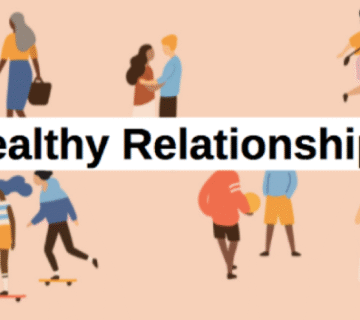Introduction: Beyond Physical Chemistry
When we examine what “Turn-Ons” in relationships, we’re exploring one of the most profound yet misunderstood aspects of human connection. While physical attraction often dominates the conversation, true relationship chemistry involves a complex interplay of emotional, intellectual, and psychological factors that sustain passion over time.
This in-depth guide will reveal:
-
The neuroscience behind romantic attraction
-
How turn-ons evolve through relationship stages
-
Why initial sparks fade (and how to reignite them)
-
Gender-specific attraction triggers
-
Actionable strategies to maintain long-term desire
Understanding these dynamics can help you cultivate a relationship where passion grows stronger with time.
What Does “Turned On” Really Mean in a Relationship?
The Four Dimensions of Lasting Attraction
Physical Connection
-
The electricity of sexual chemistry
-
Sensory responses to touch, scent, and voice
-
Body language that creates magnetic pull
Emotional Bonding
-
Feeling deeply seen and understood
-
Safe space for vulnerability
-
Shared laughter and joyful moments
Intellectual Stimulation
-
Conversations that spark your mind
-
Mental challenge that inspires growth
-
Shared curiosity about the world
Spiritual Alignment
-
Common values and life purpose
-
Mutual respect that deepens over time
-
Sense of being “home” with each other
The Science of Sustainable Attraction
Research from the Gottman Institute shows that healthy relationships maintain a 5:1 ratio of positive to negative interactions. Without conscious effort, initial turn-ons can become neutral or even turn-offs.
The Neuroscience Behind Romantic Desire
Brain Chemistry of Attraction
-
Dopamine: The pleasure chemical of new romance
-
Oxytocin: The bonding hormone of long-term love
-
Serotonin: The obsession factor in early stages
Why Novelty Matters
Our brains reward new experiences more powerfully than familiar ones, explaining why new relationships feel more exciting.
Gender Differences in Turn-Ons
What Women Typically Find Attractive
Studies reveal women often value:
-
Emotional attunement (91%)
-
Thoughtful consideration (84%)
-
Intellectual connection (77%)
-
Affectionate touch (70%)
*”When my partner remembers how I take my coffee and asks about my work challenges, I feel deeply turned on by his emotional presence.” – Maya, 33*
What Men Typically Find Attractive
Research indicates men often prioritize:
-
Physical intimacy (88%)
-
Genuine appreciation (82%)
-
Shared adventures (75%)
-
Playful energy (69%)
The Evolution of Attraction Through Relationship Stages
The Honeymoon Phase (0-18 months)
-
Chemical cocktail of new love
-
Idealization of partner’s qualities
-
Constant craving for togetherness
Building True Connection (18 months-3 years)
-
Emotional intimacy deepens
-
Vulnerabilities shared
-
Realistic view of partner emerges
Mature Love (3+ years)
-
Comfortable companionship
-
Mutual growth becomes focus
-
Conscious effort required
Why Initial Chemistry Fades (And How to Revive It)
5 Reasons Attraction Diminishes
-
Familiarity: The brain’s natural adaptation
-
Stress: Life pressures reducing presence
-
Neglect: Taking each other for granted
-
Resentment: Unresolved conflicts piling up
-
Growth: Changing needs and priorities
The Attraction Revival Plan
-
Rediscover: Weekly “first date” energy
-
Innovate: Monthly new experiences
-
Appreciate: Daily specific compliments
-
Touch: Increase non-sexual contact
-
Communicate: Regular check-ins about needs
Maintaining Long-Term Attraction
Research-Backed Strategies
Thriving couples:
-
Maintain 5 positive interactions for every 1 negative
-
Create daily micro-moments of connection
-
Express appreciation frequently
-
Handle conflicts with respect
5 Practical Techniques
-
6-second kisses: Longer, more meaningful kisses
-
Gratitude journals: Document what you admire
-
Adventure dates: Try something new monthly
-
Tech-free zones: Protected connection time
-
Growth challenges: Learn something together
When “Turn On Me” Signals Trouble
Warning Signs
-
Avoiding physical intimacy
-
Critical language increasing
-
Emotional distance growing
-
Fantasizing about others frequently
-
Lack of effort becoming normal
Repair Strategies
-
Radical honesty conversations
-
Professional counseling if needed
-
Recreating positive early memories
-
Addressing individual issues
-
Recommitment rituals
Read More: How to Maintain Emotional Intimacy in Long Distance Relationships: The 2025 Guide
Conclusion: The Art of Conscious Attraction
Understanding what truly turns us on in relationships transforms passion from accidental chemistry to intentional connection. By nurturing all dimensions of your bond, you can create a love that grows more vibrant with time.
For more research-backed insights, visit The Gottman Institute’s relationship resources.








[…] Read More: The Psychology of Turn-Ons in Relationships: What Creates Lasting Attraction […]